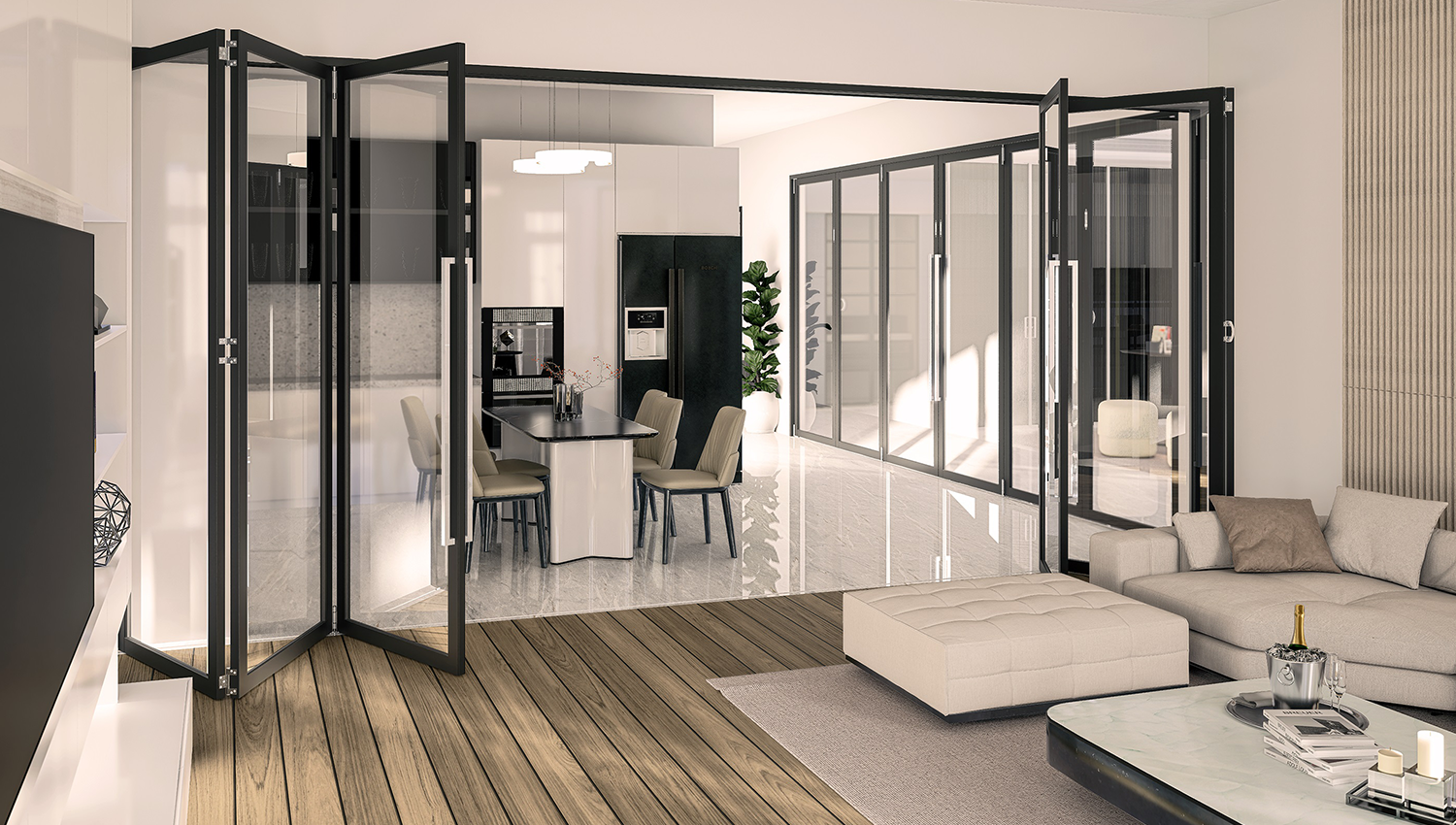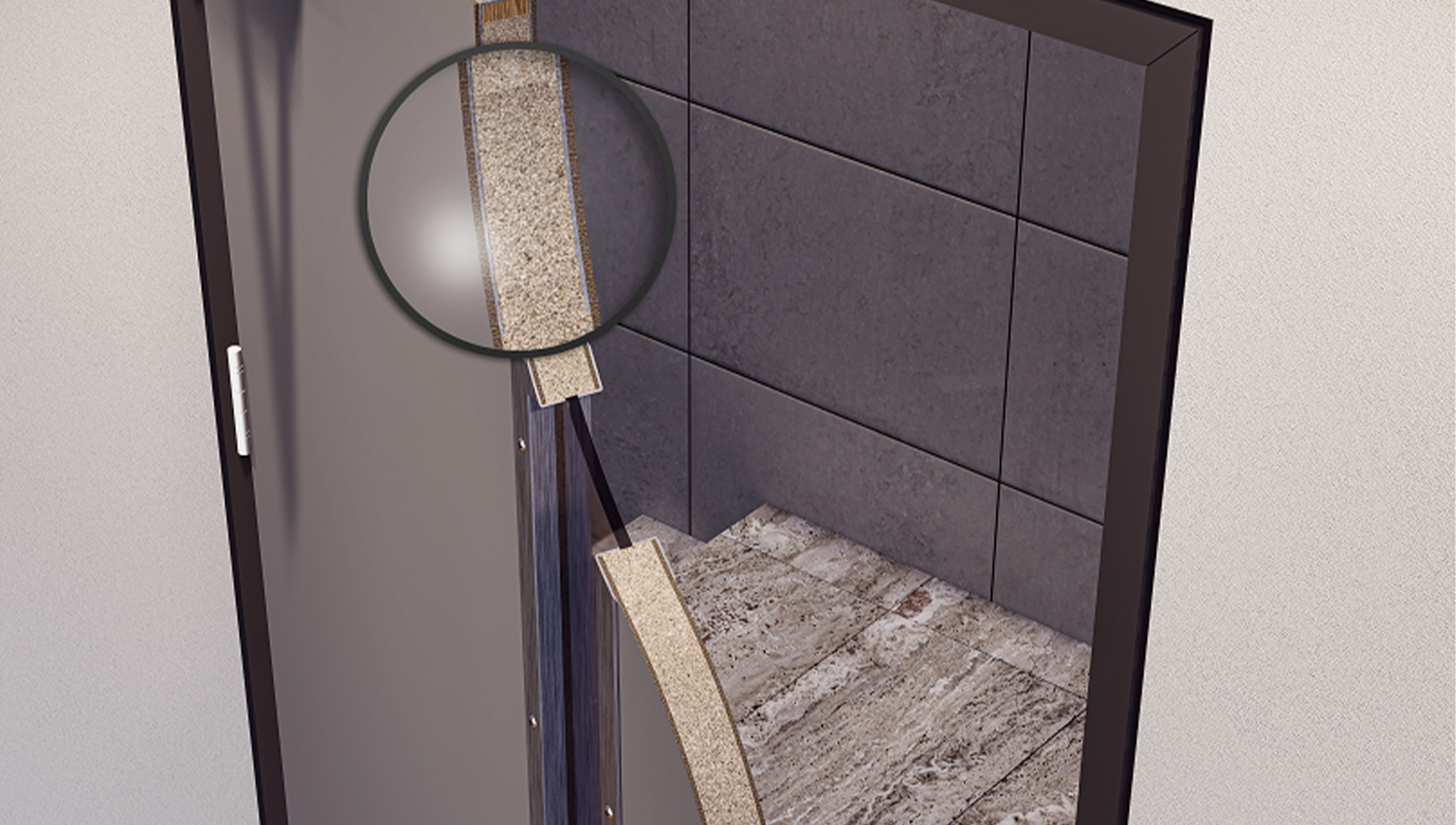
When we think of luxury homes, the focus often falls on architectural statement pieces – expansive glazing, bespoke joinery, or curated finishes. Yet one of the most influential design elements in creating a sense of privacy, comfort, and liveability is less immediately visible: acoustics.
In multi-storey residences, sound transmission between living areas, bedrooms, and entertainment zones can significantly affect how a home is experienced. Open-plan layouts remain popular, but they also increase the risk of unwanted noise travelling freely. For clients investing in a high-end residence, the expectation is that spaces feel refined and secluded — a retreat from the outside world and, at times, from other household members.
This is where the role of doors and cavity systems extends beyond function, becoming integral to acoustic performance. Selecting the right system allows architects to curate transitions between spaces in a way that manages sound while maintaining visual flow.

^ Caspian Cavity
Cavity sliding systems, in particular, have become an essential tool for architects looking to maximise space while achieving a seamless aesthetic. Systems such as Criterion’s Celtic and Caspian Cavities enable doors to glide effortlessly into wall cavities, freeing up floor space and providing a cleaner visual line.
From a functional perspective, cavity systems also allow for flexible living. A lounge can be opened up to a dining area for entertaining, or closed off when acoustic separation is required. This versatility is particularly valuable in luxury contexts, where homes are expected to cater to a variety of experiences without compromising on comfort.
See how cavity systems can elevate liveability in your next project.

^ Caspian Flushset Cavity
While cavity systems optimise space and transitions, the door itself is central to acoustic control. Premium timber doors offer both warmth and substance, providing an ideal foundation for acoustic performance. When combined with purpose-designed systems, they can deliver the level of privacy expected in luxury homes.
Criterion’s Silencio range of acoustic door systems is a good example of how design and performance can be balanced. Tested in CSIRO-accredited laboratories, the Silencio range is engineered to reduce sound transmission between rooms without compromising on aesthetic detail. Whether used in a home office to block out household noise, or between bedrooms and living areas to maintain privacy, acoustic doors can transform how effectively spaces function day to day.
For architects, considering acoustic door solutions early in the design process ensures compliance with standards such as AS/NZS 2107:2016, while also meeting – and often exceeding – client expectations of luxury.
Explore acoustic door systems for your next residential project.

^ Silencio AT50 acoustic timber door (Rw50)
The concept of luxury is evolving. It is no longer defined solely by material selection or scale, but by how well a space performs in supporting lifestyle needs. Architects who integrate acoustic performance, spatial flexibility, and refined detailing through carefully chosen door and cavity systems are well-positioned to deliver residences that feel both timeless and future-ready.
Incorporating solutions like Criterion’s Silencio acoustic range or Caspian Flushset cavity systems can help achieve this equilibrium, providing the technical performance that underpins liveability while elevating the design experience.
Ultimately, the goal is to ensure that residents not only admire their home but also feel at ease within it – shielded from unwanted noise, supported by flexible functionality, and surrounded by elegant finishes.

Right now, specifying timber skirtings is popular – but when we look at the bigger picture, the environmental and performance realities tell a different story...

When it comes to commercial fitouts, safety and compliance are just as important as design and durability.